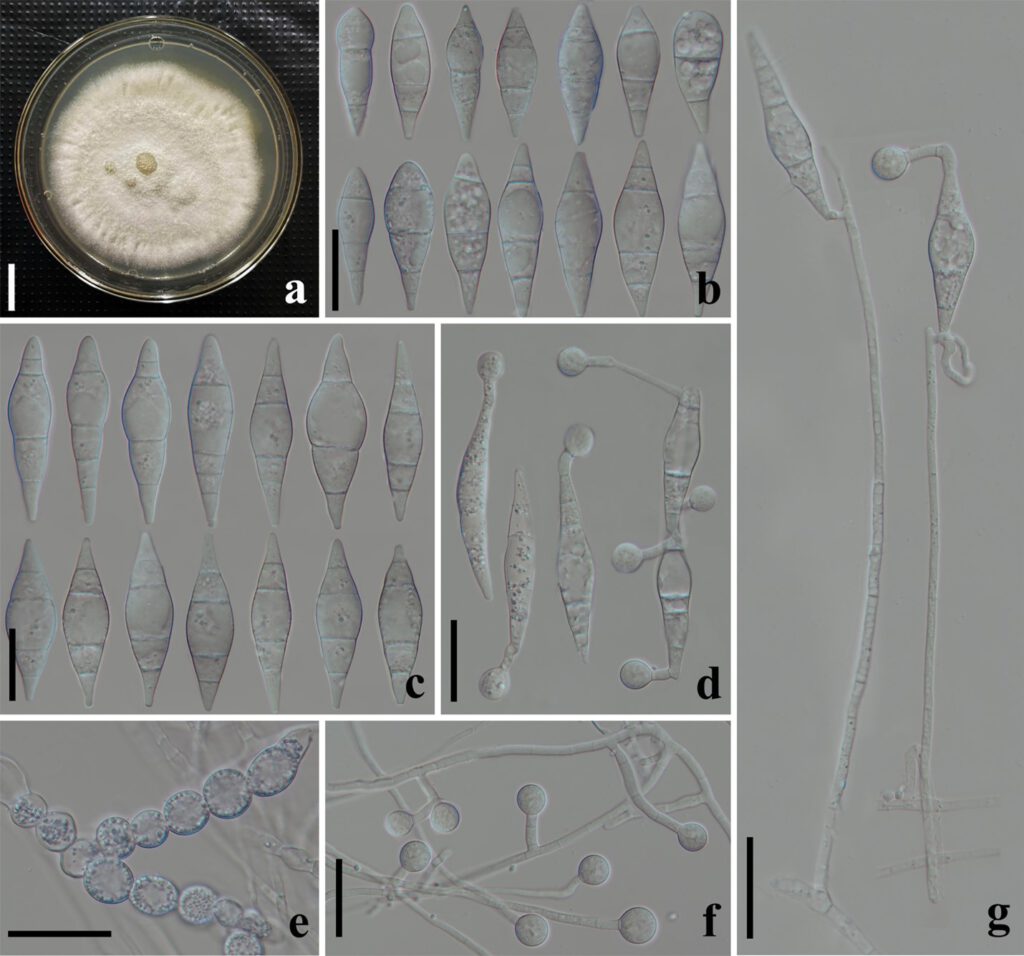Dactylellina dulongensis F. Zhang, S. Boonmee & K.D. Hyde, sp. Nov. Figure 1.
MycoBank number: MB; IndexFungorum number: IF; Facesoffungi number: FoF 12885;
Etymology: The species name “dulongensis” refers to the name of the sample collection site: Dulong Town, Gongshan County, Nujiang City, Yunnan Province, China.
Description: Saprobic on soil. Sexual morph: undetermined. Asexual morph: hyphomycetous. Colonies on potato dextrose agar (PDA) white, cottony, growing slowly, reaching 50 mm diameter after 15 days at 26°C. Mycelium is partly superficial, partly immersed, composed of septate, branched, and smooth. Conidiophores erect, septate, unbranched, hyaline, usually produce two short denticles near the apex, bearing 1–2 conidia at apex, 120–225 µm (x̅ = 168.4 µm, n = 50) long, 2–4.5 µm (x̅ = 3.3 µm, n = 50) wide at base, gradually tapering upwards to apex, 1.5–3.5 µm (x̅ = 2.2 µm, n = 50) wide at apex. Conidia clavate to fusiform, widest at the median cell, gradually tapering to both ends, 1–4-septate, mostly 4-septate, 31–48 × 5–14 µm (x̅ = 42 ×9.4 μm, n = 50). Chlamydospores globose to subglobose, ellipsoidal, growing in chains, hyaline, 5–12 × 5–12 µm (x̅ = 17.4 × 14.5 μm, n = 50). Capturing nematodes with adhesive knobs which can be formed spontaneously by hyphae specialization or directly produced spontaneously by conidia germination (conidia traps).
Material examined: Chian, Yunnan Province, Nujiang City, Gongshan County, Dulong Town, from the soil colected in burned forest, 23 April 2020, F. Zhang, Holotype: CGMCC3.20945, ex-type living clture: DL240.
Sequence data: ITS:OM956085

Fig. 1 Dactylellina dulongensis (CGMCC3.20945, holotype). a Colony. b, c Conidia. d Conidia traps. e Chlamydospore. f Trapping structure: adhesive knobs. g Conidiophores. Scale bars: a = 1 cm; c–g = 20 μm.
